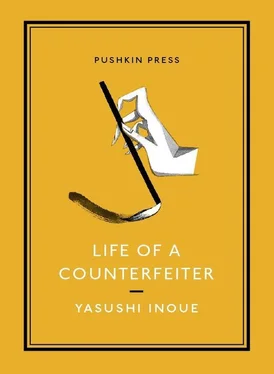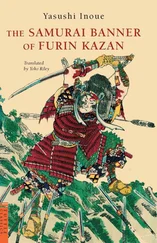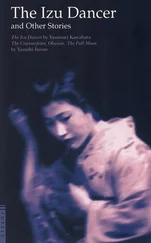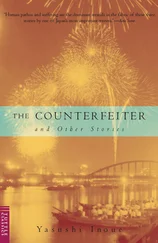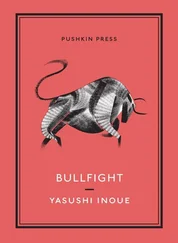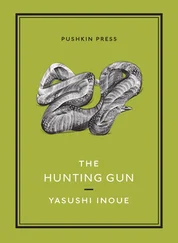And then there was one more story — this one from a slightly later time, after I graduated college and joined society — about the eldest son of the owner of a very large jewelry store in Tokyo, who had made Mitsu a formal offer of marriage, relying on the services of a go-between.
On this occasion, Mitsu’s father had refused, saying the families were separated by too wide a gap, and that he would be incapable of preparing adequately for the wedding.
The jeweler’s son, who was enrolled at a private university in Tokyo, came down shortly after to meet with Mitsu himself, but she happened to be visiting a town several kilometers off when he arrived, so he stayed at the village inn that night and went back to the city without seeing her. Two years later, he killed himself in Tokyo. The newspapers said he’d been studying too hard for the upper civil service exam, that he suffered a nervous breakdown and poisoned himself, but it had happened almost immediately after Mitsu passed away, and people in the village assumed his death was related to hers.
Somewhere along the way, as I learned of these incidents involving Mitsu, I began little by little to amend my childhood image of Aunt Omitsu.
For someone who lived only twenty years, Mitsu certainly managed to make a lot of waves in the lives around her. And while those involved might have disagreed, from a more neutral perspective there was something gorgeous and colorful about all those waves — something that not only failed to strike me, young man that I was then, as legitimate material to use in criticizing her, but actually gave me the impression that she was a very special woman, lovely and intriguing. She had stirred up all kinds of trouble, and then, just like that, she died. In a sense, it was almost awe-inspiring.
When my mother suggested that it might have been Mitsu who took me to the lake, the woman I had known as “Aunt Omitsu” appeared before me for the first time as a figure connected to my own life.
“Now that you mention it, she did seem quite fond of you,” my mother said. “Very fair skin she had. The sort of face men fall for, I guess you could say, not really a great beauty — but things were never quiet around her, that was for sure. Must have been her personality they liked, I suppose… She seemed fond of you, though, it’s true.”
Knowing my mother, I suspect that — young as she was at the time — she must have been among Mitsu’s strictest guardians; and yet, listening to her talk, I sensed only the faint nostalgia one feels for those who died long ago.
“When she stayed with us in Kanazawa that time — we didn’t know it, but she was carrying a child in her belly then. That was Kōnosuke.”
Kōnosuke was the boy she had left behind when she died — a small, fair-skinned electrician whom I had met two or three times at family gatherings. I was slightly shocked, somehow, when my mother told me that. Because I found myself recalling the couple making love in my little snippet of memory, and it occurred to me that maybe it had some connection to Kōnosuke’s birth.
But when I asked my mother whether Kōnosuke’s father, Miwa, had ever come to Kanazawa, she immediately knocked that idea down.
“No, he was a mild, timid sort of man, Miwa was, and when Mitsu started getting a reputation in the village, he turned into a big coward — he wasn’t in any shape to be visiting Kanazawa,” she said. “Besides, Mitsu seemed to have got sick of him finally, him being the sort of man he was, and she wasn’t eager to marry him. But then in the end she was pregnant, after all. She gave birth right after she left us, and went back.”
“Didn’t you notice she was getting big?”
“It’s hard to believe we were so oblivious, but no, we didn’t. I was young, of course, but I have the feeling she must have been unusually small, too.” My mother chuckled, then added that maybe the baby in Mitsu’s belly hadn’t grown very big because his mother didn’t care much for his father.
In short, Mitsu’s pregnancy led her into a marriage she didn’t really desire. Of course, people were pressuring them to marry, too, whether or not they wanted to.
I got the sense that the special circumstances of their marriage had something to do with Mitsu’s staying with us in Kanazawa during her pregnancy, and then after her death with the spread of those nasty rumors.
Naturally, I’ll never know the true location of that picture in my memory — of that shore, glowing the way it only ever could in spring — or be certain who that couple was. All I have is this single card, and I don’t know who else might have another to lay down beside it, or whether such a card can even be found in this world, or if it has long since vanished without a trace. Either way, this picture alone stands out among my few fragmentary childhood memories for the clarity with which it is drawn.
Now, whenever I recall that scene, I think of it, for no good reason, as having taken place on that little lake near the Sea of Japan, Lake Kitakata, and tell myself that the people who appear in it are Aunt Omitsu and her lover, a man no one alive knows anything about. And it seems that as time goes by, this supposition is slowly being transformed in my heart into a matter of unquestionable fact.
Was her lover, the man who lifted me in his arms and strode with me into the waters of the lake, someone she had met for the first time only after she came to Kanazawa?
Of course, it doesn’t matter. However I imagine it, I am still only imagining.
I know the indescribable brilliance of the spring sunlight that streamed down onto the face of the lake that day. That’s all. The woman in that scene may have carried a tiny life inside her; that has no bearing on the picture’s meaning, none at all. It does not make her lewd, or self-indulgent.
Sometimes, the twenty brief years of Mitsu’s life appear to me to have possessed an extraordinary breadth. It happens when I think of her bare, fair-skinned arms reaching out in my direction, and the water sparkling behind them. But I don’t know what makes me feel that way.
THIS AUTUMN, in the course of a trip down to Kyūshū to take care of some business, I set foot for the first time in Nagasaki, a city I had never before had the good fortune to visit, and in the course of my stay I happened upon certain objects that reminded me of two figures who lived in the Meiji period, both of whom have some connection to my own life.
The first was a sample of Matsumoto Jun’s calligraphy. The evening I arrived in Nagasaki, a friend invited me to K., an expensive restaurant notable as one of the venues where “men of high purpose” gathered and made merry during the Restoration. Worn out from traveling, I would have preferred to take it easy at the inn where I was staying, but it seemed heartless to reject the hospitality of a friend I had not seen in years; and so, in the end, I did go to the restaurant, which was tucked away in a corner of an entertainment district called Maruyama that has been built on the mountainside, on a rather steep slope, and is evidently classified as one of Nagasaki’s historic sites.
Hearing that the place had been favored by Restoration-era patriots called up images of the rowdy tumultuousness that took hold of similarly luxurious establishments across the country during the war, as commissioned officers in the army and navy claimed them for their own private use, behaving as they pleased, with no regard for anyone else, and these memories made me somewhat hesitant to visit such a place. Once I stepped through the old-style entryway, though, with its two hanging lanterns outside, each so big I could barely have put my arms around it, and the great buckets of water lined up along the wall in case of fire, I felt a kind of nostalgia for the dreams of old warriors whose traces lingered here, and since the architecture was in the style of an earlier era of which few examples remain in Japan in this day and age, I decided that it was, after all, worth having a look.
Читать дальше
